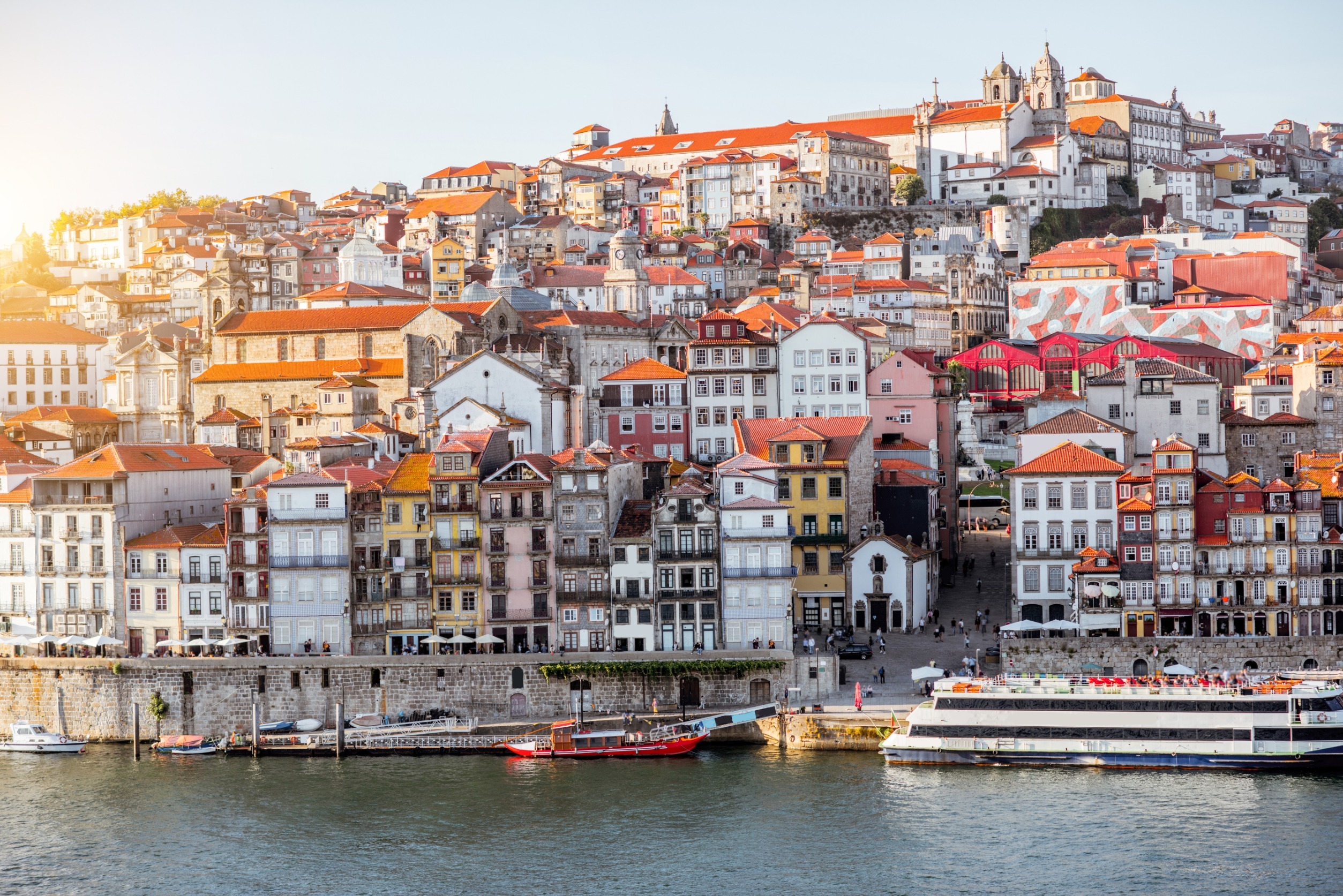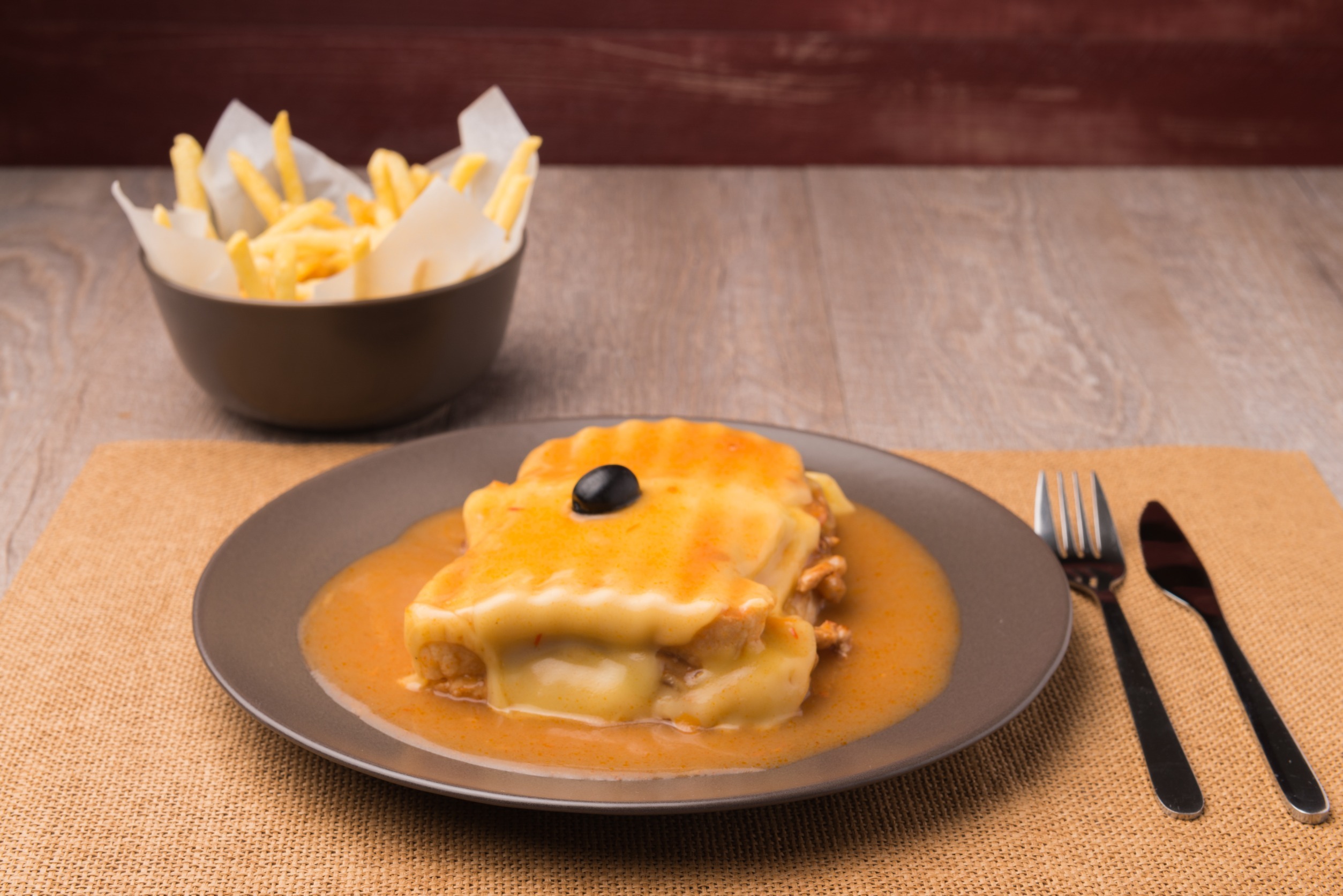
Porto, a city nestled along the banks of the Douro River in Portugal, boasts a rich culinary heritage that reflects its vibrant history and diverse cultural influences. From traditional dishes rooted in centuries-old recipes to modern interpretations that showcase the city’s culinary innovation, Porto’s cuisine is a delightful fusion of flavors, textures, and aromas that captivate the senses.
At the heart of Porto’s gastronomy is its abundant seafood. The city’s proximity to the Atlantic Ocean ensures a steady supply of fresh fish and shellfish, which feature prominently in many local dishes. Bacalhau, or salted codfish, holds a special place in Portuguese cuisine, and Porto is no exception. Whether served simply grilled with olive oil and garlic or as the star ingredient in hearty stews like Bacalhau à Brás, this versatile fish is a staple on Porto’s dining tables.
Another delicacy synonymous with Porto is the iconic Francesinha. Francesinha is a decadent and iconic Portuguese dish that originated in Porto, the country’s second-largest city. Often referred to as a “heart attack on a plate” due to its indulgent ingredients and rich flavors, Francesinha holds a special place in the hearts and stomachs of locals and visitors alike.

At its core, Francesinha is a sandwich, but it’s unlike any other you’ve likely encountered. The dish typically consists of layers of various meats, sandwiched between slices of bread and smothered in a thick, spicy tomato and beer sauce, topped with melted cheese and often accompanied by a fried egg and a side of fries.
The meats used in Francesinha can vary but commonly include ham, linguiça (Portuguese smoked sausage), fresh sausage, steak, and sometimes roast pork or chicken. These meats are layered between slices of bread, much like a traditional sandwich, but what sets Francesinha apart is what comes next.
After assembling the meats and bread, the entire sandwich is covered generously with the signature sauce. This sauce is a crucial component of Francesinha, typically made from tomatoes, beer, and a blend of spices that may include paprika, chili, and bay leaves. The sauce is simmered until thick and flavorful, imparting a rich, savory taste that complements the meats perfectly.
Once the sandwich is drenched in sauce, it’s topped with slices of cheese, traditionally Portuguese cheese like queijo da serra or queijo flamengo, which melt and create a gooey, decadent layer over the sandwich. Some variations of Francesinha also include a fried or poached egg on top, adding an extra layer of richness and indulgence.
To complete the dish, it’s often served with a side of crispy fries, which can be enjoyed on their own or used to soak up any remaining sauce.
Francesinha is typically served piping hot and is best enjoyed with a cold beer or a glass of port wine, which helps balance out the dish’s richness.
While Francesinha is undoubtedly a hearty and indulgent meal, it has become a beloved symbol of Porto’s culinary scene, representing the city’s bold flavors and unapologetic approach to food. Whether enjoyed in a traditional tavern or a modern bistro, Francesinha is an experience not to be missed for anyone visiting Porto.
Porto’s culinary landscape also celebrates its agricultural bounty, with an array of dishes showcasing locally sourced produce and meats. The fertile lands of the Douro Valley yield an abundance of fruits, vegetables, and olives, which find their way into traditional dishes like Caldo Verde, a hearty soup made with kale, potatoes, and chorizo. Grilled meats, such as succulent pork ribs and tender beef skewers, are popular fare, often seasoned with aromatic herbs and spices that reflect the city’s Mediterranean influences.
No exploration of Porto’s cuisine would be complete without indulging in its array of artisanal cheeses and cured meats. From creamy Queijo da Serra to pungent Queijo de Azeitão, cheese lovers are spoiled for choice, while charcuterie enthusiasts can savor the flavors of presunto (cured ham), chouriço (spicy sausage), and morcela (blood sausage), often served alongside crusty bread and tangy olives.
As the birthplace of port wine, Porto takes its libations seriously, with wine culture deeply ingrained in its culinary traditions. The city’s historic wine cellars, known as “caves,” line the banks of the Douro River, offering visitors a glimpse into the art of winemaking and the opportunity to sample an array of port wines, from tawny and ruby to vintage and white. Port wine’s rich, fortified flavors pair beautifully with the city’s savory cuisine, providing the perfect accompaniment to an indulgent meal or a leisurely sunset stroll along the riverfront.
In recent years, Porto has witnessed a culinary renaissance, with a wave of young chefs breathing new life into traditional recipes while embracing global influences and culinary trends. Innovative restaurants and food markets dot the city, offering a diverse array of dining experiences that cater to every palate and preference.

From cozy tascas serving homestyle dishes to upscale eateries pushing the boundaries of gastronomic creativity, Porto’s dining scene reflects the city’s dynamic spirit and passion for good food. Whether savoring a bowl of comforting tripe stew in the historic Ribeira district or sampling inventive small plates at a trendy gastropub in the artsy Cedofeita neighborhood, visitors to Porto are sure to be enchanted by the city’s culinary delights.
In essence, Porto’s cuisine is a reflection of its rich history, cultural diversity, and relentless passion for good food. With its abundance of fresh seafood, flavorful meats, artisanal cheeses, and world-renowned wines, the city offers a gastronomic journey that delights the senses and leaves a lasting impression on all who partake in its culinary treasures.


Leave a Reply